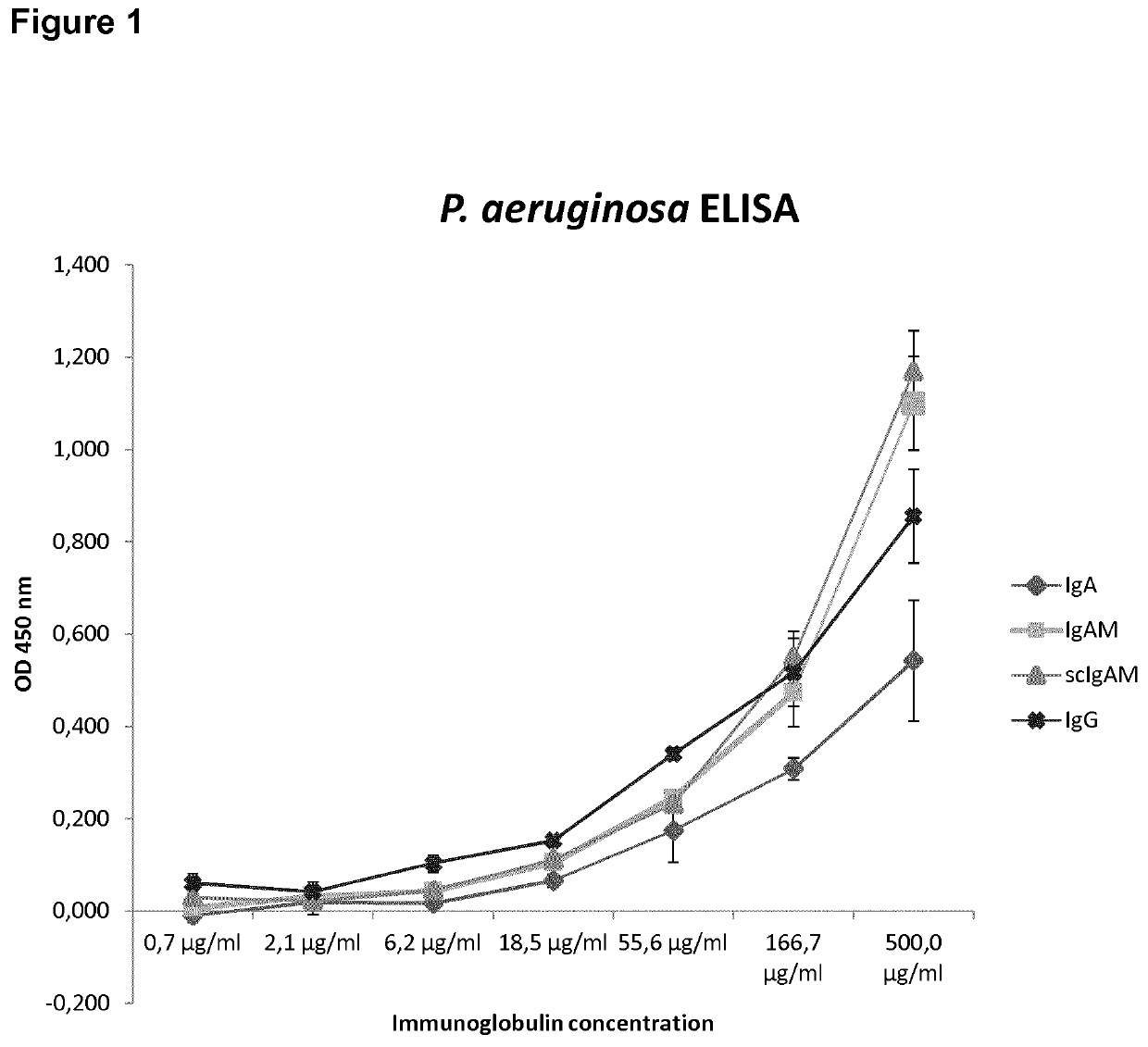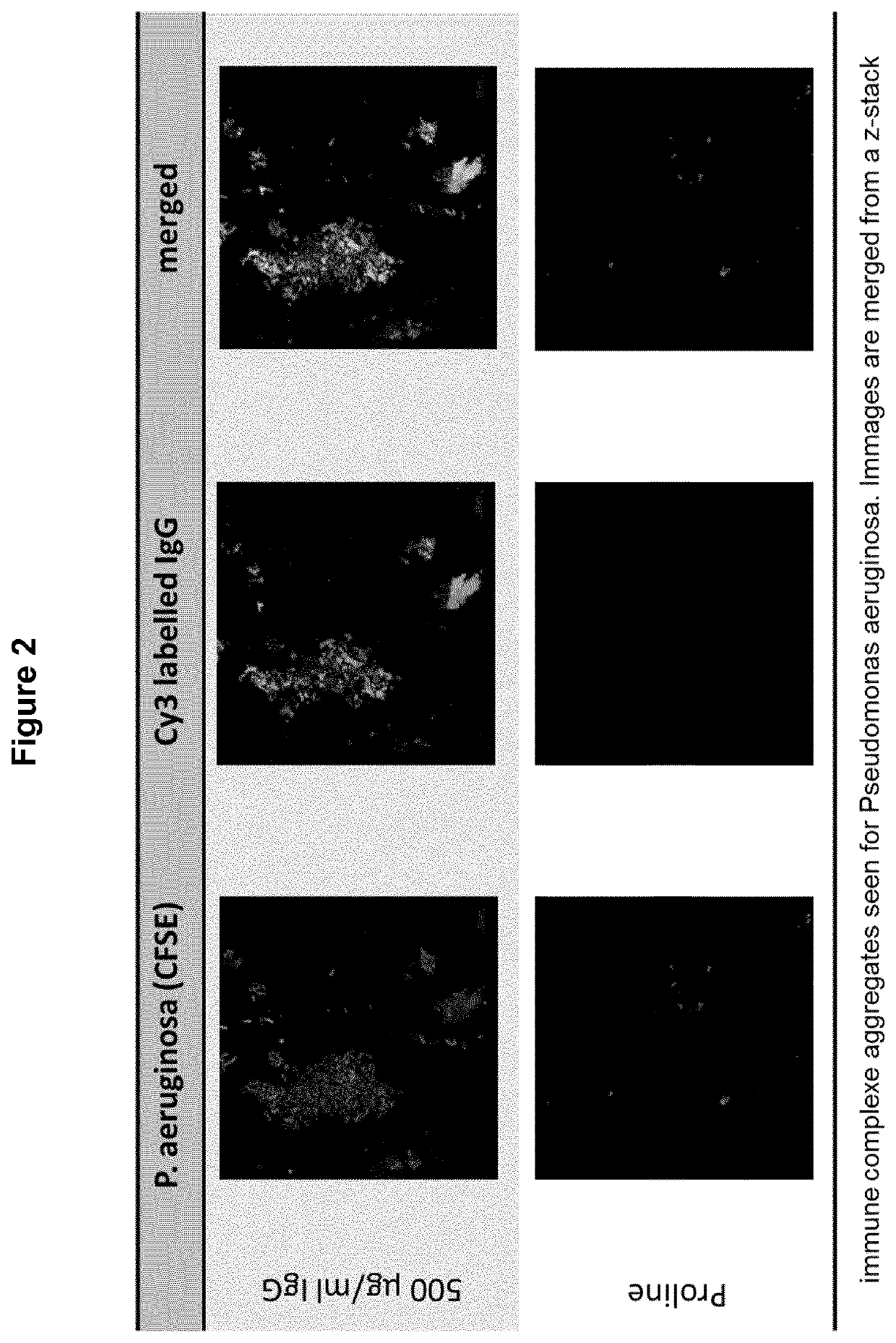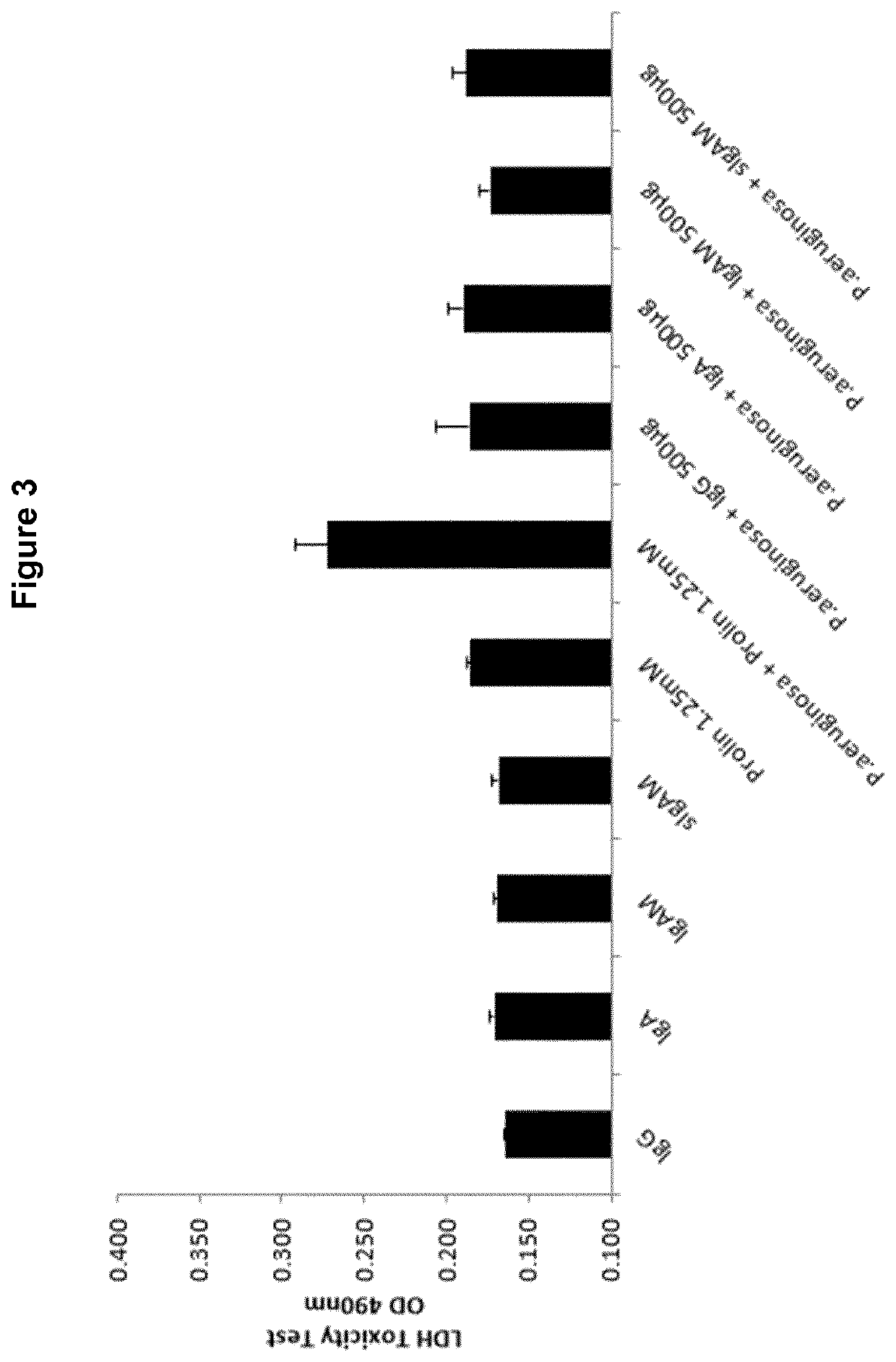Methods and compositions for preventing or treating acute exacerbations with polyclonal immunoglobulin
a polyclonal immunoglobulin and exacerbation technology, applied in the direction of antibody medical ingredients, spray delivery, aerosol delivery, etc., can solve the problems of abnormally high air lingering in the lungs of patients with chronic lung disease, difficulty in exhaling the air in the lungs fully, and shortness of breath of patients with such a chronic lung disease, so as to prevent or treat an acute exacerbation, the effect of reducing damag
- Summary
- Abstract
- Description
- Claims
- Application Information
AI Technical Summary
Benefits of technology
Problems solved by technology
Method used
Image
Examples
example 2
rived Immunoglobulin IgG Form Large Aggregates with PA
[0227]Immunoglobulins may account for several roles at the mucosal surfaces. They may serve as opsonins, leading to enhanced phagocytic recognition or promoting the deposition of complement and subsequent lysis. They can bind and therefore tag infected cells for destruction through a mechanism called antibody-dependent cell-mediated cytotoxicity (ADCC). Immunoglobulins can neutralize a pathogen by binding to its surface antigens and inhibiting its growth. It can also coat a pathogen and prevent its adherence to the mucosal epithelia, a mechanism called immune exclusion. At last, immunoglobulins, because of their di- or multivalent binding properties, may agglutinate microbes into larger clusters allowing for more effective recognition by the immune system and mechanical clearance by the host [36]. Secretory IgA and IgM present at the mucosal sites present 4 valences and 10 to 12 valences respectively. In contrast, IgG display onl...
example 3
rived Immunoglobulins Prevent Tissue Damage Induced by PA
[0229]PA is a pathogenic organism known for its involvement in biofilm formation as well as for its resistance to many antibiotics [39]. PA presents with many virulence factors. Some of those are exoenzymes, such as elastase A and B, Protease IV, exotoxin A, exoenzyme S or hemolysin. Exoenzymes serve at defending PA against components of the immune system as well as at participating into its toxicity and associated tissue damage.
[0230]To assess how much PA was inducing tissue damage in our infection model, we measured the release of lactate dehydrogenase (LDH), which is associated to the rupture of the plasma membrane. Experiment was run in our primary 3D cell culture system and LDH was measured in samples collected at 24 h post-infection. All the immunoglobulin formulations (e.g., IgG, IgA, IgAM and sIgAM) proline (vehicle) were tested. FIG. 3 demonstrates that PA infection is inducing the release of LDH at a level above norm...
example 5
rived Immunoglobulins Interact with Human Rhinoviruses
[0239]HRV are mainly known to be responsible for more than half of cold-like illness [41]. However, there are also involved in the exacerbations of chronic obstructive pulmonary disease (COPD) as well as of asthma. More than 100 serotypes exist. To assess if nebulized plasma-derived immunoglobulins could protect individuals from HRV infections, binding from a clinical isolate of HRV by different plasma-derived immunoglobulins was tested. FIG. 9 shows that all immunoglobulins formulations were able to bind HRV in an ELISA assay (see material and methods section) in a dose dependent manner, with dose ranging from 0.7 μg / mL to 500 μg / mL. Binding was however different between each immunoglobulin formulation. IgG was the less potent binder while IgAM and IgA show good binding. Addition of SC to IgAM seems to decrease the potency of IgAM to bind HRV. It may point out that some of the binding is not Fab dependent.
PUM
| Property | Measurement | Unit |
|---|---|---|
| concentration | aaaaa | aaaaa |
| concentration | aaaaa | aaaaa |
| plasma | aaaaa | aaaaa |
Abstract
Description
Claims
Application Information
 Login to View More
Login to View More - R&D
- Intellectual Property
- Life Sciences
- Materials
- Tech Scout
- Unparalleled Data Quality
- Higher Quality Content
- 60% Fewer Hallucinations
Browse by: Latest US Patents, China's latest patents, Technical Efficacy Thesaurus, Application Domain, Technology Topic, Popular Technical Reports.
© 2025 PatSnap. All rights reserved.Legal|Privacy policy|Modern Slavery Act Transparency Statement|Sitemap|About US| Contact US: help@patsnap.com



